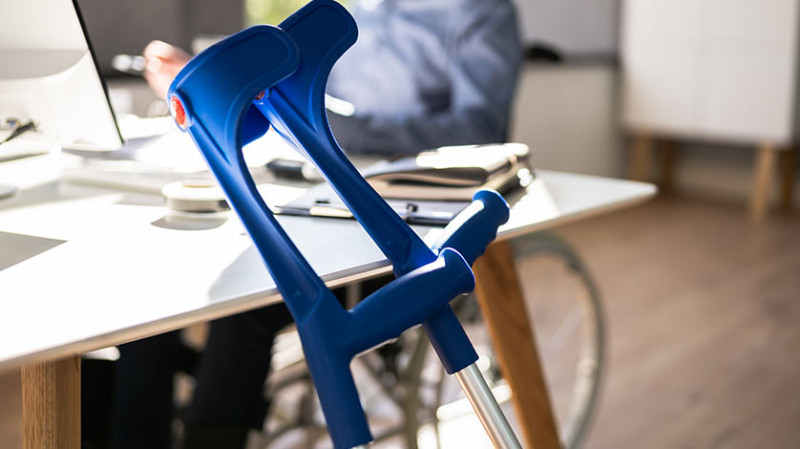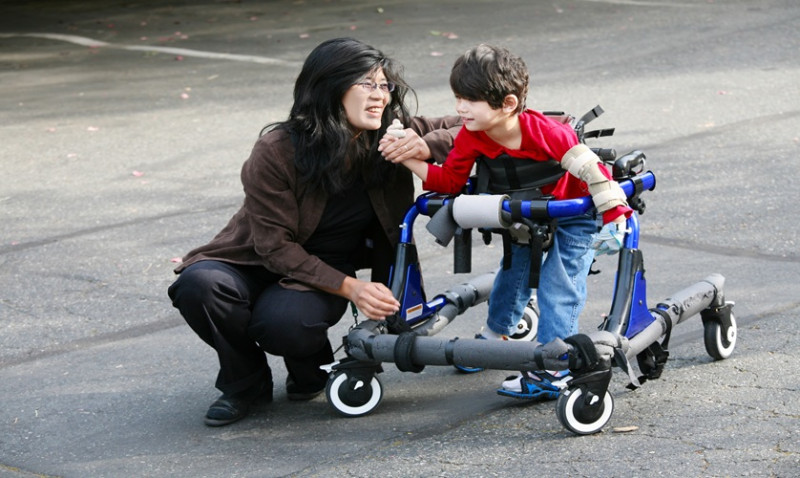
Living with or supporting someone with a disability can be challenging, but with the right mindset, tools, and understanding, it is possible to create an inclusive and empowering environment. Whether you’re a DIY enthusiast modifying your home, a professional tradesperson adapting designs, or a designer looking to make your projects more accessible, understanding disabilities can help create more thoughtful, inclusive spaces for all. In this blog, we'll explore practical strategies for coping with disabilities, how to support others effectively, and tips on making environments more accessible for individuals with varying needs.
Understanding Disabilities in Everyday Life
Disabilities can be physical, mental, intellectual, or sensory, and they often impact how individuals engage with their environment. While some disabilities are visible, many are not. It's essential to recognise the broad range of challenges people face and avoid generalisations. Not every disability requires a wheelchair, for example—some people have chronic pain, vision impairment, neurodivergent behaviours, or hearing difficulties.
Awareness is key. For individuals in the construction, interior design, or architecture industry in the UK, understanding the basic principles of inclusive design should be a first step. Consider how someone with limited mobility might navigate a narrow hallway, or how someone neurodivergent might respond to excessive visual clutter.
According to the UK Office for National Statistics (ONS), more than 14 million people in the UK are disabled, which is over 20% of the population. This underlines the importance of considering diverse needs in everyday planning, particularly when working on building or redecorating homes and public spaces.
Whether you're retiling a bathroom, installing cabinetry, or selecting lighting schemes, factoring in disability access is not just good practice—it's legally required under UK building regulations and the Equality Act of 2010. Beyond compliance, it aligns with social responsibility and good design.
Coping with Disabilities at Home
For those diagnosed with a disability, adapting their home environment can significantly improve their quality of life. Fortunately, advancements in assistive technology and inclusive design principles have made it easier than ever to cope at home without compromising on style or functionality.
Start with your high-traffic areas. For example, ensure accessible widths for doorways (typically at least 800mm), consider level-access flooring transitions, and install easy-to-grip handles, rocker light switches, or motion-activated lighting. For visually impaired individuals, tactile indicators and high-contrast colour palettes can make a massive difference.
In the kitchen, consider pull-down shelves, side-opening ovens, and lever taps. Bathrooms can be fitted with walk-in tubs, slip-resistant flooring, grab rails, and accessible-height toilets and sinks. Think about storage too—easy-reach cabinets reduce strain and improve independence.
It’s worth mentioning that many councils across the UK offer the Disabled Facilities Grant (DFG), which helps with the cost of making changes to homes. DIY enthusiasts looking to make adjustments themselves can benefit from free assessments and funding for essential hardware installations.
Small changes can have a big impact. Even switching traditional lightbulbs with smart lighting that responds to voice commands or motion sensors can help individuals with mobility or dexterity limitations.
How to Support Loved Ones and Colleagues with Disabilities
Supporting someone with a disability is about more than just physical adjustments—it entails emotional support, respect, patience, and advocacy. Start by listening. Ask what they need, instead of assuming. Empower them to voice their preferences and retain independence wherever possible.
In professional environments such as architect firms or contractor teams, it’s essential to foster inclusive workplaces. This may involve offering flexible hours, adapting desks or workstations, or providing assistive technologies such as speech-to-text software.
It also helps to normalise conversations around disabilities. Education and awareness training in the workplace can encourage empathy and prepare team members to better support each other. As a manager—or a self-employed tradesperson working with clients—you gain a reputation for professionalism and inclusivity by demonstrating care and adaptability.
When working on a home renovator’s project, don’t hesitate to speak to your client about accessibility. Even if it’s not a current need, it could be in the future. Remember, inclusive design benefits everyone. For example, wider doorways help wheelchair users but also people with pushchairs or carrying large items. Lever handles are easier for arthritis sufferers but also for people with full hands.
Importantly, avoid pity. People with disabilities are not defined by their restrictions—they have aspirations, skills, and personalities like everyone else. Your goal should be to enable and uplift, not to judge or limit.
Accessible Design Tips for DIYers and Trade Professionals
When embarking on your next DIY project or client renovation, keep accessibility in mind from the start. Simple changes during the build or redesign phase can avoid costly modifications later. Here are some practical design tips to help you consider inclusivity at every stage:
- Install zero-step entrances: These allow wheelchair access and make it easier for people with prams or heavy loads.
- Optimal doorway width: Doors should be at least 800mm wide. Pocket doors or sliding doors are a space-saving alternative.
- Switch type and placements: Rocker switches and plugs set between 450mm and 1200mm from the floor are more accessible.
- Flooring: Choose firm, slip-resistant, and level flooring transitions. Avoid thick pile carpets and uneven joins.
- Lighting: Install dimmable, layered lighting. Avoid direct-glare bulbs and consider natural daylight optimisation.
- Furniture spacing: Allow wheelchairs sufficient manoeuvring space – a 1500mm turning circle is ideal.
- Accessible plumbing: Wall-mounted sinks and floating vanities provide better wheelchair access.
- Handles and knobs: Lever-style handles are easier than round knobs for those with limited dexterity.
It’s worth investing in good-quality materials that will withstand frequent use and cater to diverse needs. For example, non-slip flooring in wet rooms, soft-close cabinetry, and motion-activated extractors or fans.
Useful Resources & Support in the UK
Living in the UK provides access to several organisations and schemes that offer guidance, funding, and support for people with disabilities, as well as those working on accessible property improvements. Below is a table of key resources:
| Organisation | Support Offered | Website |
|---|---|---|
| Disability Rights UK | Information about legal rights, independent living, and advice for professionals. | disabilityrightsuk.org |
| Disabled Facilities Grant (DFG) | Grants to help cover home adaptations for disabled individuals. | gov.uk |
| Changing Places Toilets | Guidance on accessible toilet facilities and related building standards. | changing-places.org |
| AccessAble | Detailed accessibility guides for public places across the UK. | accessable.co.uk |
| Royal Institute of British Architects (RIBA) | Resources and CPD courses for inclusive design. | architecture.com |
Final Thoughts
Whether you're living with a disability or supporting someone who is, the goal should always be empowerment, dignity, and equal opportunity. As a DIYer, architect, or tradesperson in the UK, your work has the potential to impact lives significantly—adding value not just to properties, but to people.
Incorporating inclusive design is more than a trend; it’s a reflection of a society that values everyone. From thoughtful product selections to layout adaptations, the changes you make don’t just meet legal requirements—they make life better.
Stay educated, stay empathetic, and always build with accessibility in mind.






